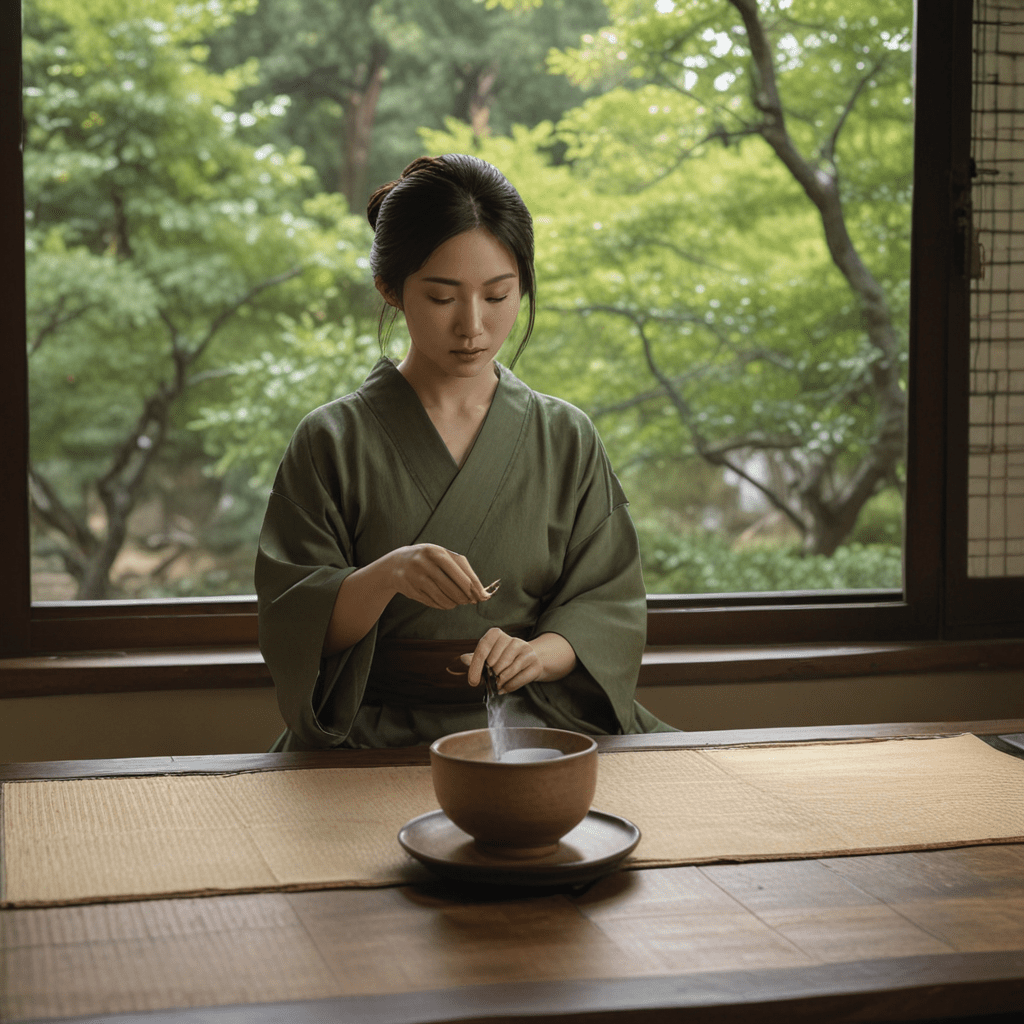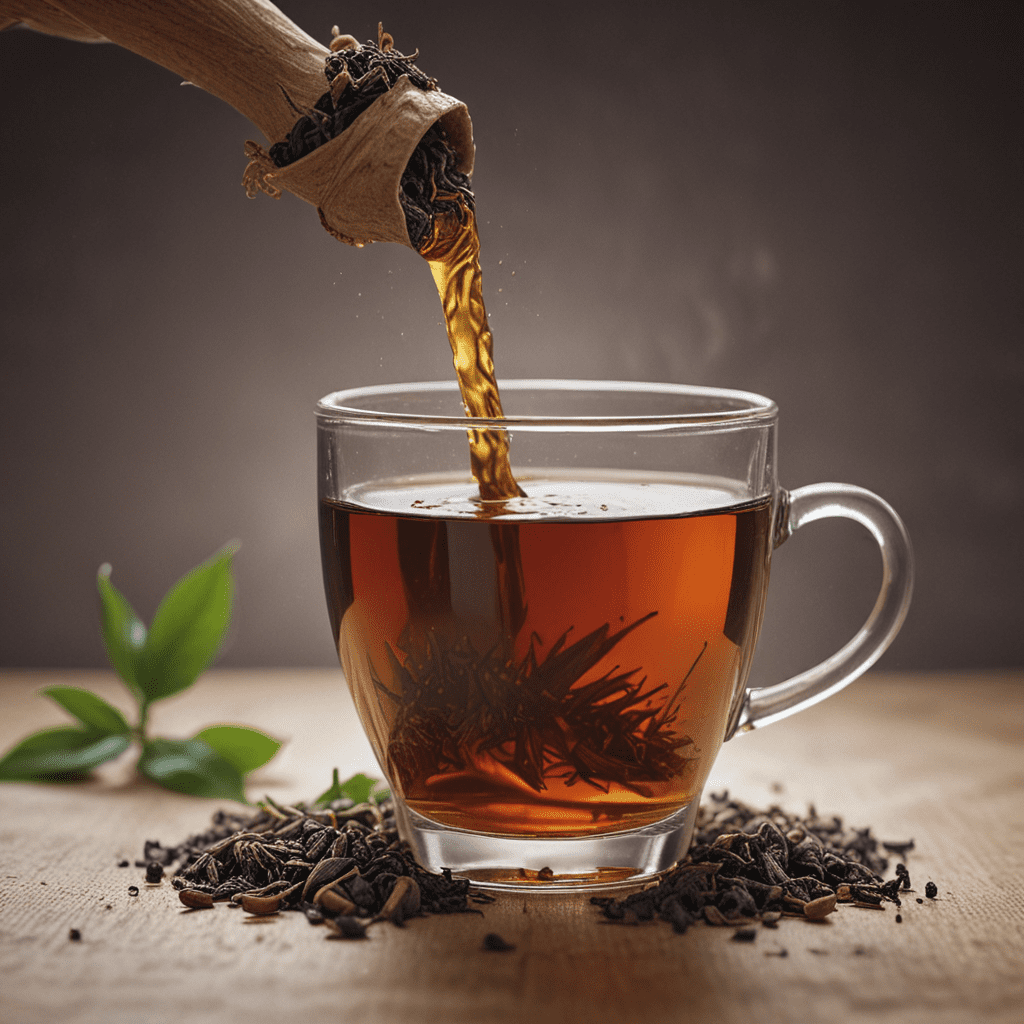Introduction: The Essence of the Japanese Tea Ceremony
The Japanese tea ceremony, known as "chanoyu" or "chado," is an ancient ritual steeped in Japanese tradition that embodies the principles of Zen Buddhism. It is a profound practice that goes beyond mere tea drinking to encompass the cultivation of mindfulness, harmony, and inner tranquility. The ceremony's intricate etiquette and elaborate procedures provide a framework for participants to savor the present moment and find solace amidst the complexities of life.
The Setting: Creating a Tranquil and Zen-like Environment
The tea ceremony is typically held in a teahouse or tea room, a secluded space designed to facilitate tranquility and contemplation. The ambiance is one of simplicity and serenity, with natural elements such as wood, bamboo, and tatami mats creating a calming atmosphere. The tea room's decor often incorporates traditional Japanese art forms like calligraphy and flower arranging, further enhancing the aesthetic and contemplative experience.
The Guest's Role: Embracing Humility and Respect
Guests in the tea ceremony play a crucial role in maintaining the harmonious ambiance of the ritual. They approach the teahouse with a sense of humility, leaving behind worldly concerns and embracing a mindset of openness and receptiveness. Respect for both the host and the tea implements is paramount, as guests demonstrate proper etiquette and acknowledge the significance of every gesture and interaction.
The Host's Preparation: Rituals and Etiquette for Serving Tea
The host of the tea ceremony assumes the role of a gracious guide, orchestrating the intricate steps of the ritual with precision and attention to detail. Preparations begin long before the guests arrive, involving the careful selection and preparation of tea utensils and the creation of a serene atmosphere within the tea room. The host's movements and gestures during the ceremony are imbued with grace and purpose, reflecting their deep understanding of the tradition and respect for its protocols.
The Utensils: Understanding the Significance of Tea Ceremony Implements
The utensils used in the Japanese tea ceremony are not mere tools but objects of great reverence and cultural significance. Each piece, from the tea whisk to the tea bowl, holds its own unique history and symbolism. Their forms and textures are intentionally crafted to enhance the sensory experience of the tea and promote a deeper connection with the ritual's underlying principles.
The Tea Powder: Matcha, the Heart of the Japanese Tea Ceremony
Matcha, a finely ground green tea powder, lies at the core of the Japanese tea ceremony. Its vibrant emerald hue and distinct umami flavor evoke a sense of tranquility and provide a unique sensory experience. Matcha is whisked into hot water using a bamboo whisk, creating a frothy and flavorful tea. The process of whisking is both an art form and a meditative practice, requiring patience and precision.
The Whisking Method: Creating a Frothy and Rich Tea
Whisking matcha is a delicate process that involves a specific technique and rhythm. The bamboo whisk, known as a "chasen," is used in a circular motion to create a frothy and evenly blended tea. The whisk's fine bristles gently agitate the matcha powder, releasing its complex flavors and aromas. The resulting tea is a vibrant green, with a smooth and creamy texture.
The Serving Etiquette: Formal Gestures and Polite Conversation
Serving tea in the Japanese tea ceremony is a ritualized process that showcases the host's grace and hospitality. The host presents the tea bowl to the guest with both hands, offering it with a slight bow. Guests receive the tea with equal reverence, acknowledging the host's gesture and expressing gratitude. Polite conversation and respectful interactions contribute to the harmonious ambiance of the ceremony.
The Zen Principles: Cultivating Mindfulness and Inner Peace Through Tea
The Japanese tea ceremony is deeply influenced by Zen Buddhism, which emphasizes mindfulness, simplicity, and the interconnectedness of all things. The ritual's slow and deliberate pace encourages participants to focus on the present moment, cultivating a sense of inner peace and tranquility. By savoring the simple act of drinking tea, practitioners can access a deeper understanding of the present and appreciate the beauty of impermanence.
Conclusion: The Timeless Art of Savoring the Present Moment
The Japanese tea ceremony is a timeless art form that transcends mere tea drinking. It is a practice that invites participants to slow down, embrace the present moment, and cultivate a sense of inner harmony. Through its intricate rituals and symbolic gestures, the tea ceremony provides a path to mindfulness, tranquility, and a deeper appreciation for the interconnectedness of life. By immersing themselves in this ancient tradition, practitioners can cultivate a sense of gratitude, reverence, and a profound connection with the world around them.
FAQs
Q: What is the significance of the tea bowl in the Japanese tea ceremony?
A: The tea bowl is a central element in the tea ceremony, symbolizing the vessel that holds the essence of the tea. Its shape, texture, and glaze are carefully considered to enhance the sensory experience of drinking tea.
Q: What is the proper way to hold the tea bowl?
A: The tea bowl is typically held in the left hand, with the right hand supporting the bottom. The bowl should be held at a comfortable height, allowing the drinker to appreciate its beauty and feel its warmth.
Q: Can I bring my own tea utensils to the tea ceremony?
A: It is generally not considered appropriate to bring your own tea utensils to a tea ceremony. The host will provide all the necessary implements, which have been carefully chosen to complement the specific tea and setting.
Q: Is it acceptable to talk during the tea ceremony?
A: While it is important to maintain a respectful silence during the formal parts of the tea ceremony, polite conversation and lighthearted banter are encouraged during the more informal stages.
Q: What is the meaning of the "wabi-sabi" concept in the Japanese tea ceremony?
A: "Wabi-sabi" is a Japanese aesthetic that embraces the beauty of imperfection and impermanence. In the tea ceremony, it manifests in the appreciation of the simplicity and rustic charm of the tea utensils and the tea room.


